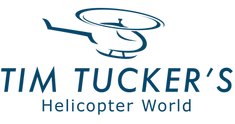Mentoring
- pilottucker
- May 29, 2022
- 3 min read
When it comes to mentoring and the incredible impact it has on safety in our industry, I feel fortunate to have benefitted, early on in my career, from a structure that heavily relied on a mentoring system, albeit in an informal way. I graduated from US Army flight training in 1971 with a whopping 210 flight hours and was immediately sent to Vietnam.
From a helicopter pilot’s perspective, Vietnam was quite a bit different than the recent Middle East conflicts in that the helicopter units stayed in-country for the entire war and the pilots cycled through on a yearly basis. So at any given time a helicopter unit consisted of some pilots nearing the end of their cycle, some in the middle and “newbies” that had just arrived. I flew the UH-1 – Huey which the Army used with a two-pilot crew, a perfect “mentoring” environment.
Interestingly, the only real gauge for pilot experience was not flight hours that we commonly use today, or years flying, or even rank (remember this is the Army) but, rather, time in months (not flight hours) in Vietnam, flying combat missions. The system was built on the “old guys” mentoring the “new guys” on the intricacies of a combat assault, an emergency extraction or simply the importance of delivering turkey dinners on Christmas day.
Newbies were assigned an aircraft commander (AC) with substantial time in-country as a mentor which lasted until the newbie became a PIC. Since the unit’s aircraft commanders (one step up from a PIC)) were always changing with pilots going home and PICs being elevated to AC, I had three mentors during my first three months in Vietnam and I can honestly say I would not be here today without the lessons instilled by these incredibility supportive men. Not just how to keep my head down when the bullets are flying, but insights I have applied and passed along my entire flying career.
A few come to mind:
CW2 Steve Robertson (we called him Robbie) would question me at slow times during a mission about limitations, emergency procedures, what would you do if this happened or that happened, all of which was a real pain in the ass and embarrassing when I didn’t know the answer. He stressed that in the middle of an emergency you aren’t able to “look things up” so at the end of each flight during the two minute cool-down or after a quick post flight Robbie would say “Tucker, you get paid once a month – read your flight manual once a month” I wish I had a dollar for every time I’ve repeated that phrase.
WO1 Rich Madore, my first mentor, really helped in that strange adjustment from a flight school environment to a combat environment. He emphasized that in combat and I think this is true in many flight situations, indecision can get you killed. I clearly remember his voice in my helmet roaring “It doesn’t matter what you do – just do something!” It’s certainly still true that in an emergency the “deer in the headlights” syndrome can be deadly.
Finally, Robbie again, after a night flight to meet my monthly requirement, he warned me, “Currency is not proficiency, promise me to RTB (Army talk for return to base) before sunset”. Boy, does that statement still ring true today.
I would strongly encourage senior pilots out there to recognize the importance of this mentoring responsibility. The foundation of a good “Safety Culture” within any company begins with the attitude of its senior pilots and mentoring the new guys or girls is the best way to insure these values are maintained and passed along.
It’s not just the techniques or skills of flying the helicopter in a new job, although that’s certainly a part of it, but mentoring is just as important in helping younger pilots deal with the emotional extremes inherent to many jobs in the helicopter world. Whether it’s adjusting to the life and death ordeals a new EMS pilot is forced to confront or coping with the loneliness of a 3 week on – 1 week off schedule in a remote location – Mentoring can be key to adapting. It sure helped me!!
Tim Tucker
April 2021



Comments